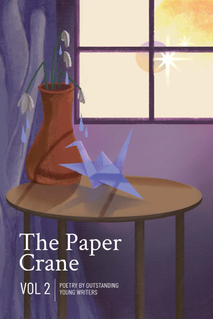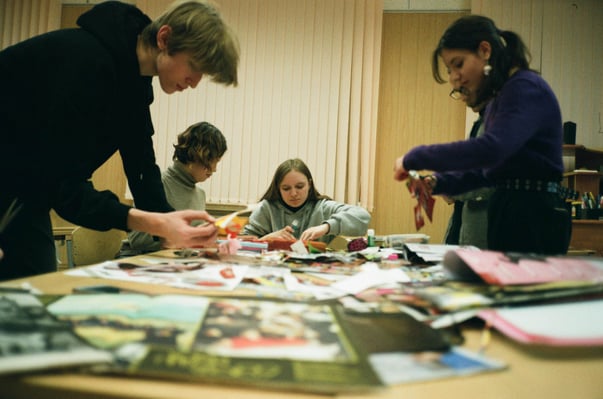by Lisa Hiton
It is in our nature to ask gigantic questions. What are stars? What happens when...
It can be difficult for students and young adults to find places that accept submissions of their work. Many publications don’t take work from writers under the age of eighteen, no matter how excellent the writing is!
And while it's true that with age comes experience, missing out on a potentially incredible opportunity just because you’re a little too young can feel pretty unfair. Here are five great ways for students and young adults to publish their written work.
Teachers can (and should) motivate students to enter their writing into literary contests and competitions tailored to young writers. Many websites host contests for a wide variety of genres and age groups, offering prizes and recognition for outstanding work. Winning — or even just submitting — their work can boost students' self-esteem and validate their creative endeavors. Here are two examples of writing contests for students to enter:
Write the World is a non-profit dedicated to equipping teenagers with the confidence to write, publish, and refine their work. They run a writing competition once per month covering genres and styles from poetry to journalism, as well as a range of topics from environmental writing to fairytales. These competitions are free to enter and open to teenage writers aged 13-19 years old, and the top prizes include cash prize money. If that's not a strong incentive to submit your work, I don’t know what is!
Young Writers is another group that runs year-round writing competitions for students aged 4-18 years old (so you can start as early as you like!), with a strong focus on poetry and creative writing. They also provide free resources for teachers to help inspire their pupils and offer a number of prizes, such as free books for schools and writing “goody bags.” Entering a contest like this is a stellar way to improve students’ creativity with different themes to tackle throughout the year.

Teachers can also encourage students to submit their writing to online magazines or blogs catering to young writers. These publications typically accept submissions of various genres, including poetry, short stories, and essays. Students will gain great experience by publishing their work online — and perhaps also by engaging with peers beyond their immediate school community. Here are two literary magazine examples to get you started:
The Paper Crane is a new, student-run journal that promotes the perspective of youth with print anthologies and a blog. Their first print anthology, released in April 2022, featured prose from brilliant young writers from all over the world. Their most recent anthology centers on young poets, which demonstrates how open they are to different genres and subjects. And of course, even in our age of ever-churning digital media, there’s still something exciting about the potential to be published in a print anthology!



For a slightly more established example, Parallax Literary Magazine has been published by the creative writing department of Idyllwild Arts Academy in California since 1997. It was created (and is still run) by students, and has now expanded to include an online element that accepts submissions from high school students all around the world. They welcome submissions in fiction, poetry, creative nonfiction, and dramatic writing.
Without a doubt, submitting to publications like these helps young writers learn dedication and commitment, ensuring they see the publication process through to the end — and teachers should spur on their students to seek out similar opportunities.
Another excellent way to encourage students to publish their writing is by helping them create a self-published anthology. Students might consider having a unifying theme or genre for the anthology to give it a cohesive, professional feel. It could be based on a specific writing prompt, or a chosen genre like science fiction, poetry, or personal essays.
Students can get started with a simple word processor before looking at writing platforms like Reedsy Book Editor or Atticus, each of which has specialized features. Platforms like Kindle Direct Publishing can then be used to bring their e-book — or print book, if they wish to print on demand — to market, making it available to purchase by thousands of people. Students may wish to start with an e-book anthology, then use the funds from the digital sales to create print editions for those who want something on their shelves!
Creating a self-published student anthology is a significant achievement that will have a lasting impact for everyone involved and hopefully inspire students to continue improving their writing. Beyond sharpening just their writing skills, this process will also teach students how to collaborate on — and ultimately publish — a book from scratch.

For students looking for the lowest possible barrier to entry, there are also a number of online writing platforms that provide students with a fantastic space to get inspiration, share their work, and receive feedback.
The best-known of these websites is Wattpad, which has over 90 million monthly users. Students can use Wattpad’s free resources to help them create their own writing of all stripes, including poetry, novels, and any other genre they might want to pursue. Note that Wattpad is open to all ages 13 and up, the content is not moderated, and the site may include advertisements.
Alternatively, Write the World offers a free writing community specifically for ages 13-19. Students can join a space for young writers to respond to prompts, provide and receive peer reviews, access monthly writing competitions, and connect with fellow teens. Teachers can utilize virtual classroom groups, lesson plans, assessment tools, and other resources designed to supplement their curriculum - all while forging cross-cultural connections between teens across continents.
One of the most valuable aspects of online writing platforms is its interactive, collaborative nature. Students can receive peer feedback, comments, and constructive criticism from fellow writers and readers, helping them refine their writing skills and develop their unique voice.
It’s worth noting that some publications won’t accept submissions if they’ve already been uploaded to an online platform. However, they’re still a great, cost-free option for some student practice and a chance for publishing opportunities through the platform itself!
Most high schools and colleges have some form of school newspaper, magazine, or newsletter to which students can contribute. Although these publications aren’t as prestigious nor as wide-reaching as dedicated literary publications, they can be an excellent place for students to start building skills and confidence in their writing.
A school publication provides students with a tangible outlet to express themselves, voice their experiences, and share their stories with an audience. There doesn’t need to be a strict adherence to a particular genre or topic; school publications can encompass anything, as long as it gets students interested in writing!
This might include news articles on upcoming events, features on student clubs or achievements, or even investigative pieces on school policies. Other sections could be dedicated to creative writing like poetry, short stories, or personal essays. Each of these sections can serve as a platform for students to explore their creativity and share their unique views with the school community.
Here’s hoping that these ideas and examples of ways to publish student writing will promote and encourage students to get inspired — and allow them to get their work out there for the world to see!
About Rose Atkinson-Carter
Rose Atkinson-Carter is a writer with Reedsy, a marketplace that connects authors with the world’s best self-publishing resources and professionals like editors, designers, and ghostwriters. She lives in London.

Whether you're a Write the World alum or simply someone who loves to write, we hope that passion...
READ MORE
by Lisa Hiton
It is in our nature to ask gigantic questions. What are stars? What happens when...

As the National Assessment of Educational Progress (NAEP) reveals, reading scores are declining in...
READ MORE